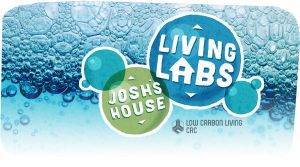 Ten suburban homes near Fremantle in Western Australia have been chosen to participate in a two-year research project conducted by Curtin University and the CRC for Low Carbon Living.
Ten suburban homes near Fremantle in Western Australia have been chosen to participate in a two-year research project conducted by Curtin University and the CRC for Low Carbon Living.
Each household has bought into the idea of reducing its environmental footprint in some way or another, be it with solar panels on the roof, water tanks collecting rain or low energy lighting and appliances.
The question we are looking to answer is if provided with the right information and guidance will these householders go even further to reduce their energy and water consumption and lower their carbon footprint? Basically, is our behaviour the number one factor in living more sustainably? Can simple lifestyle changes reduce our bills, make our homes more comfortable and save us money?
That’s what LIVING LABS is looking to find out…
Video Overviews

Series Introduction
Ten suburban homes sign up for a two-year experiment tracking their behaviour and collecting data in order to prove that small changes can result in big wins whether you are living in a high performance home or not. Episode 1 explains the research objective and introduces the participants.

Saving Energy
In this episode we take a closer look at energy use. We find out how much is being being used by the households and where the savings can be made. Participants set their goals and we find out if they achieve them.

Saving Water
In this episode we take a closer look at water use. The research team works with the householders to identify where savings can be made. We discover some surprising spikes in water use and help track down where the water is going.

Wrap Up
We’ve reached the end of a two-year experiment following the efforts of 10 households in reducing their energy and water use through simple lifestyle changes. We find out how they’ve gone, whether they’ve achieved their goals, plus take a look at the impact of their actions relative to the broader sustainability status of their homes.
